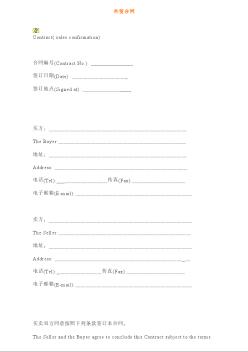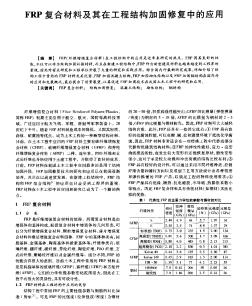1 Introduction to Composite Materials
1.1 Development of Composite Materials
1.2 Definition and Classification of Composite Materials
1.2.1 Definition of Composite Materials
1.2.2 Structure of Composite Materials
1.2.3 Classification of Composite Materials
1.2.4 Performance of Composite Materials
1.3 Reinforcing Theory of Composite Materials
1.3.1 Reinforcing Mechanism and Mixing Rule of Particle-Modified Composite Materials
1.3.2 Reinforcing Mechanism of One-Way Arrangement of Continuous Fiber-Reinforced Composite Material
1.4 Hydrothermal Effect of Composite Materials
1.5 Compatibility and Wettability of Matrix and Reinforcement
1.5.1 Compatibility
1.5.2 Wettability
1.6 Interface of Composite Material
1.6.1 Definition of Interface of Composite Material
1.6.2 Role of Interface Phase
1.7 Composition Effect
1.8 Design Content and Method of Composite Materials
1.8.1 Design Content of Composite Materials
1.8.2 Design Method of Composite Materials
1.9 Commonly Used Composite Materials in Highway Engineering
References
2 Geosynthetics
2.1 Classification and Characteristics of Geosynthetics
2.1.1 Types of Geosynthetics
2.1.2 Characteristics of Geosynthetics
2.2 Engineering Characteristics of Geosynthetics
2.2.1 Physical Characteristics
2.2.2 Mechanical Characteristics
2.2.3 Interracial Friction Characteristic of Geosynthetics and Soil Interaction
2.2.4 Hydraulic Characteristic
2.2.5 Durability
2.3 Engineering Application of Geosynthetics
2.3.1 Functions of Geosynthetics and Its Application Scope
2.3.2 Engineering Application of Geosynthetics
References
3 Steel Fiber Reinforced Concrete
3.1 Material Components and Process Characteristics of Steel Fiber Reinforced Concrete
3.1.1 Components
3.1.2 Characteristics of Mixed Materials of Steel Fiber Reinforced Concrete
3.2 Reinforcing Mechanism and Interface Performance of Steel Fiber Reinforced Concrete
3.2.1 Reinforcing Mechanism of Steel Fiber Reinforced Concrete
3.2.2 Steel Fiber——Interface Performance of Cement Base
3.3 Performance of Steel Fiber Reinforced Concrete
3.3.1 Mechanical Performance of Steel Fiber Reinforced Concrete
3.3.2 Shrinkage and Creep
3.3.3 Durability of Steel Fiber Reinforced Concrete
3.4 Design and Construction Technology of Mix Proportion of Steel Fiber Reinforced Concrete
3.4.1 Design of Mix Proportion of Steel Fiber Reinforced Concrete
3.4.2 Preparation Process of Steel Fiber Reinforced Concrete
3.5 Application of Steel Fiber Reinforced Concrete in Engineering
3.5.1 Steel Fiber Reinforced Concrete Pavement
3.5.2 Bridge Structure and Rail Sleeper
3.5.3 Building Structure and Products
3.5.4 Hydraulic Buildings, Ports and Marine Engineering
3.5.5 Tunnel Lining and Slope Protection
References
4 Modified Asphalt and Material Requirements for SMA
4.1 Modified Asphalt
4.1.1 Concept and Classification of Modified Asphalt
4.1.2 Evaluation Methods of China's Modified Asphalt Technical Index
4.1.3 Production Process of Modified Asphalt
4.2 Material Requirements for SMA
4.2.1 Basic Concept and Formation Mechanism of SMA
4.2.2 Material Requirements for SMA
4.3 Design Process and Construction Control of Mix Proportion of Asphalt Mixture
4.3.1 Design Process of Mix Proportion of Asphalt Mixture
4.3.2 Construction Control of Asphalt Mixture
References
5 Polymer Matrix Composites
5.1 Polymer Matrix Materials
5.1.1 Introduction of Polymer
5.1.2 Polymer Matrix
5.2 Polymer Concrete
5.2.1 Polymer-Modified Cement Concrete (Mortar)
5.2.2 Resin Concrete (Mortar)
5.2.3 Polymer-Impregnated Concrete (Mortar)
5.3 Application of Polymer Composites in Civil Engineering
References
6 Functional Layer Materials of and Preventive Maintenance Materials of Pavement
6.1 Functional Layer Materials of Pavement
6.1.1 Functional Layer Materials of Cement Concrete Pavement
6.1.2 Functional Layer Materials of Asphalt Pavement
6.2 Preventive Maintenance Materials of Pavement
6.2.1 Preventive Maintenance Materials of Cement Concrete Pavement
6.2.2 Preventive Maintenance Materials of Asphalt Pavement
References2100433B

 英文版外贸合同(中英文对照版)
英文版外贸合同(中英文对照版)

 FRP复合材料及其在工程结构加固修复中的应用
FRP复合材料及其在工程结构加固修复中的应用